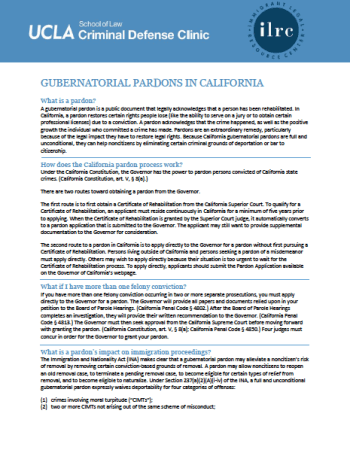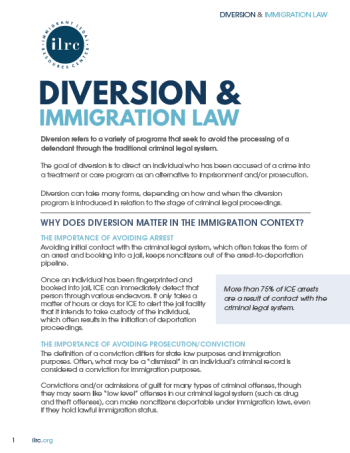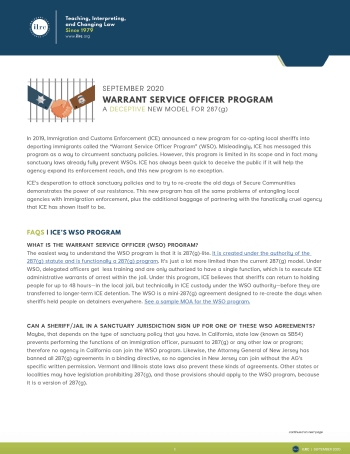
Advocates and community members can work together to fight messages of fear and panic by helping community members learn about their rights and how to protect themselves from ICE. The Immigrant Legal Resource Center has created a variety of materials to educate the community and prepare individuals for possible encounters with immigration authorities.

Gubernatorial pardons have become an increasingly important and accessible tool for immigrants to erase certain immigration consequences of criminal convictions. This two-page primer, written in collaboration with the UCLA School of Law Criminal Defense Clinic and available in both English and Spanish, provides an overview of the California Pardon process for potential applicants and their advocates.

Diversion refers to a variety of programs that seek to avoid the processing of a defendant through the traditional criminal legal system. The goal of diversion is to direct an individual who has been accused of a crime into a treatment or care program as an alternative to imprisonment and/or prosecution.
As the Trump administration’s aggressive immigration policies have increasingly come under scrutiny, Homeland Security Investigations (HSI), a division within the U.S. Department of Homeland Security (DHS), has played an increasingly significant role in carrying out brutal tactics to target immigrants for deportation.

FAQ about ICE’s newest model of 287(g), the Warrant Service Officer (WSO) program.

Starting in June 2019, Bexar County and San Antonio will implement "cite and release," a new administrative policy that seeks to reduce arrests. The policy directs law enforcement officers to use their discretion to issue citations for low-level, non-violent offenses.
This resource, co-authored by the ILRC and United We Dream (UWD), compares the criminal and inadmissibility grounds for Titles I and II of the American Dream and Promise Act of 2019 with DACA and TPS.
This resource, co-authored by the Immigrant Justice Network (IJN) and the National Immigrant Justice Center (NIJC), discusses the immigration consequences of discriminatory practices within the criminal legal system. IJN is a network comprised of the ILRC, the Immigrant Defense Project (IDP), and the National Immigration Project of the National Lawyers Guild.
This resource, co-authored by the Immigrant Justice Network (IJN) and the National Immigrant Justice Center (NIJC), discusses the immigration consequences of discriminatory practices within the criminal legal system. IJN is a network comprised of the ILRC, the Immigrant Defense Project (IDP), and the National Immigration Project of the National Lawyers Guild.
This resource, co-authored by the Immigrant Justice Network (IJN) and the National Immigrant Justice Center (NIJC), discusses how mandatory detention impacts individuals. IJN is a network comprised of the ILRC, the Immigrant Defense Project (IDP), and the National Immigration Project of the National Lawyers Guild.